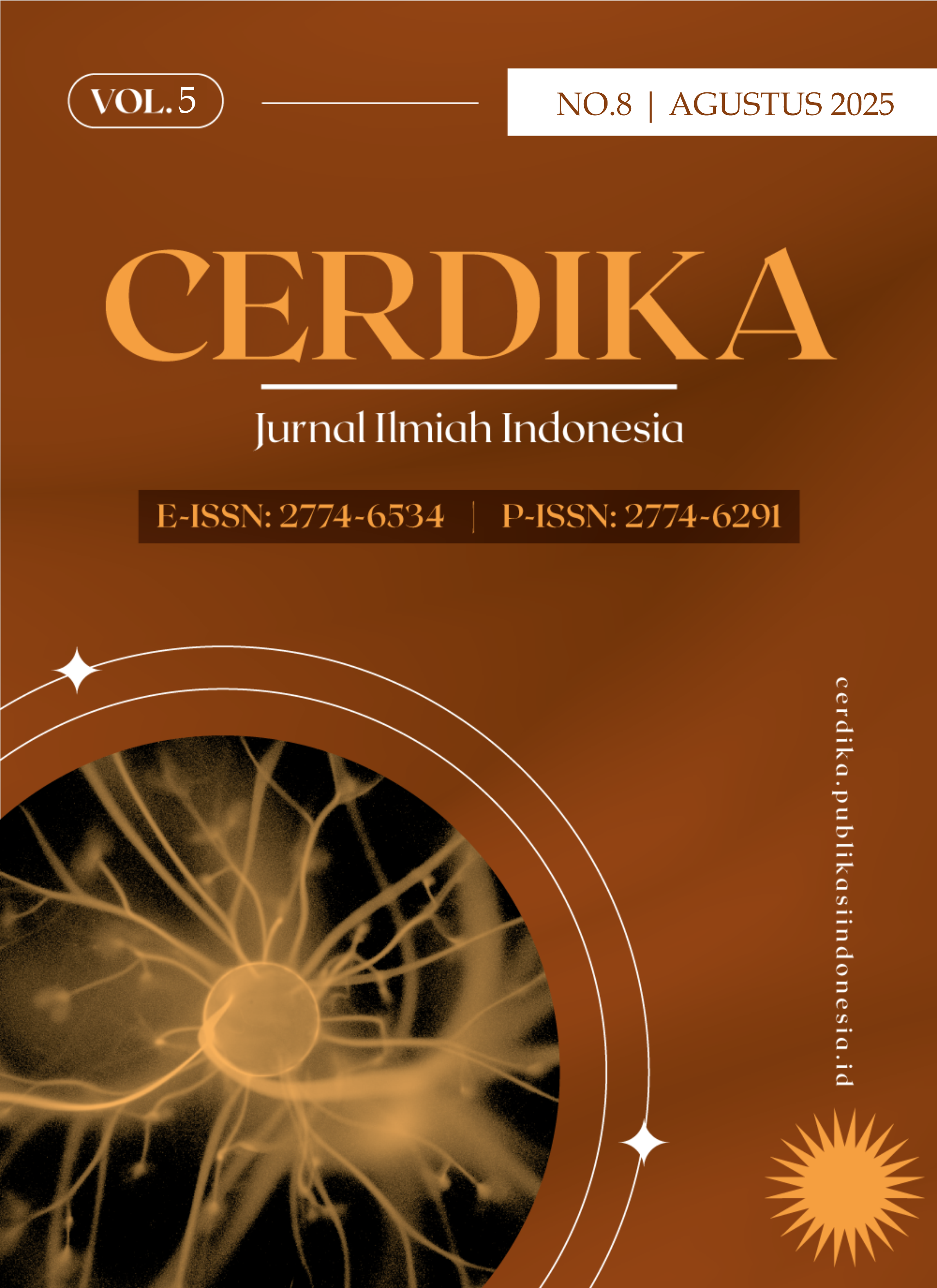Case Study Comparison Response Artificial Tear And Corticosteroid Therapy For Pterygium In Sleman Yogyakarta: Findings From Two Patients
DOI:
https://doi.org/10.59141/cerdika.v5i8.2802Keywords:
pterygium, artificial tears, corticosteroids, study case, optometry clinicalAbstract
Pterygium is one of abnormality surface common ocular found, especially in temperate regions tropical like Indonesia. Conditions This marked with growth abnormal fibro- vascular tissue of conjunctiva to the cornea, which can result in disturbance vision, irritation chronic, and decreasing quality visual life of the patient. Some study previously, as explained by Bradley et al. (2022), stated that exposure ultraviolet light, dryness ocular, and factors inflammation is contributor main pathogenesis pterygium. Non- surgical treatment of pterygium degrees light until currently focused on management Symptoms and prevention progressiveness. Two modalities therapy the most frequent conservative used is artificial tears (tears artificial) that functions guard tear film stability, as well as corticosteroids topical pressing response inflammation local. However, the comparison effectiveness clinical second therapy This in management pterygium light until while in Indonesia still limited. Therefore that, research This aims to evaluate in a way deep response clinical giving artificial tears compared to with corticosteroids topical on patients pterygium with approach studies case observational. METHOD Study This use approach studies case clinical descriptive with design longitudinal observational. Subjects consists of from two patient with a diagnosis of pterygium degrees light until currently undergoing care in one of the practice optometry in Sleman, Yogyakarta. Patients First given artificial tear therapy (sodium carboxymethylcellulose 0.5%) while patient second given corticosteroids topical (fluorometholone 0.1%). Period intervention in progress for 14 days with frequency administration 3 times a day. Evaluation done before therapy (day 0), mid therapy (day 7), and post-therapy (day 14). Instruments evaluation covering scoring irritation eye use Ocular Surface Disease Index (OSDI), assessment slit-lamp clinical against hyperemia conjunctiva and vascularization pterygium, as well as scale subjective visual comfort based on interview structured. Data is analyzed in a way descriptive and comparative in a way qualitative between case. RESULTS findings Second subject show repair clinically significant in matter subtraction symptom irritation and increase visual comfort. In subjects receiving artificial tears, occur decline OSDI scoring from 32 (moderate) to 14 (mild) in 14 days, with decline minimal hyperemia. While that, the subject who receives corticosteroids topical experience decline OSDI score from 34 to 8 (almost normal), accompanied by subtraction hyperemia and vessels blood more superficial real based on results slit lamp examination. Although second therapy give results positive, response anti-inflammatory from corticosteroids looks more strong in a way clinical in press vascularization active and improving comfort subjective patient in more time short. Findings This in line with literature recently proposed by Sánchez - Tocino et al. (2023), which explains that corticosteroids topical capable lower expression cytokines proinflammatory on the surface eyes and inhibits superficial angiogenesis. Although Thus, therapy term long with corticosteroids bring risk like improvement pressure intraocular and opacities lens, so that its use must controlled and supervised in a way strict. On the other hand, artificial tears proven safe used in term long and fit as therapy maintenance, but effect the therapy tend slow and not in a way direct affect the inflammatory process that becomes base progressiveness pterygium. In the context of this, approach individualistic very important, where the characteristics clinical patient, level irritation, and history disease ocular become consideration main in election therapy. Research This also confirms that approach combinative can give results optimal clinical, as recommended by Del Valle et al. (2021) which supports use artificial tears as complement therapy anti-inflammatory. CONCLUSION that Artificial tears and corticosteroids topical you are welcome effective in reduce symptom irritation and increase visual comfort in patients pterygium degrees light until moderate. However, corticosteroids show response more clinical faster and more strong in reduce hyperemia and manifestations inflammation local. Usage therapy must customized with individual patient conditions as well as potential effect side term long. It is recommended that an optometrist consider use therapy combinative in case pterygium light, with monitoring strict to potential effect side corticosteroids. Evaluation periodic to pressure intraocular and conditions surface ocular need done. In addition, education to patient about factor risk pterygium and its importance protection eye from UV exposure is necessary Keep going encouraged. Research This give outlook practical for clinicians optometry in taking decision therapeutic based on evidence. Approach observational studies case This open opportunities for development protocol standard therapy conservative pterygium in Indonesia, especially in the population at risk tall like worker outside space and the elderly. Implications more area also includes the need study advanced with design quantitative experimental and more samples big to generalize results and compile guidelines clinical national in non- surgical treatment pterygium.
Downloads
Published
How to Cite
Issue
Section
License
Copyright (c) 2025 Nurul Imawati, Levya Otivian Nuvida

This work is licensed under a Creative Commons Attribution-ShareAlike 4.0 International License.







